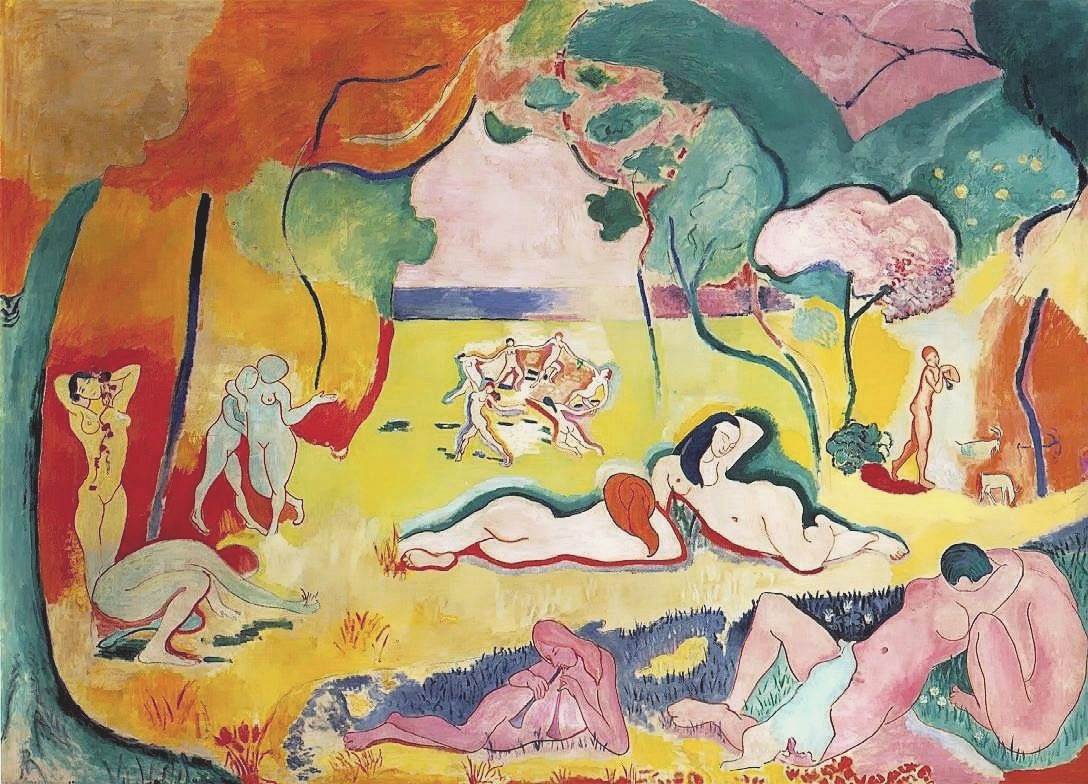The Art of the Steal, a documentary on the government and private interest groups' hostile efforts to make a private art collection into a public collection, has been making me think about the issues presented.
The documentary follows the fate of the art collection of Albert Barnes who made a mass fortune inventing the antiseptic drug Argyrol. Appropriately, Barnes' art collection was put in the trust of the Barnes Foundation located outside of Philadelphia. The Foundation is not only a house of art but also an educational institution. Barnes' collection includes 181 Renoirs, 69 Cezannes, 60 Matisses, 44 Picassos, and 14 Modiglianis. He has Matisse's The Joy of Life, a masterpiece that was extensively discussed in my art history course, Van Gogh's Portrait of the Postman Joseph Roulin, and Seurat's Models. All in all, Barnes collected around 9,000 pieces of art valued at over $25 billion today. His Impressionism-focused collection, according to the documentary, is larger than that of the Met or the MoMA.
Despite having such a great collection, Barnes did not welcome the public to see it for one important reason. In 1923, Barnes put on an exhibition of his collection but was completely dismissed by the critics. At the time, his Pre-/Post-/Impressionist and Fauvist collection was considered too avant-garde, unrefined, primitive by the elite and art critics of Philadelphia. After this incident, Barnes grew extremely antagonistic towards those who did not appreciate his art collection-namely, the elite and art critics. Barnes then closed the door to his collection to those people but welcomed students, art educators, and the working people. Along the way, Barnes made many enemies.
To prepare for, what he foresaw as, the fate of his art collection, Barnes wrote in his will that the collection will never leave the Barnes Foundation, be lent, toured and basically fall in the hands of those who had despised. Additionally, the collection would only be opened to the public two days a week according to his will. Sadly, Barnes' will was not honored. A few decades after Barnes' death, the physical building of the Barnes Foundation fell into disrepair, funding ran low, and control of the collection entered the hands of people who had other plans for the famous/infamous art collection.
The collection was sent on an extremely successful world tour. The Foundation opened up to the public completely. And without a champion for Barnes's vision and will, long-time enemies of Barnes crept up to some control of the Foundation. Today, a new building is being constructed just adjacent to the Philadelphia Museum of Fine Arts to house the new Barnes Foundation--the ultimate insult to Barnes who hated the Philadelphia MFA for every thing it stood for.
So the issues at hand: Should the Barnes Foundation be opened to the public? Should the paintings be toured? lent? Should Barnes' will be honored despite the caliber of the collection?
I am having a hard time answering most of these questions. Originally, I thought it is important to honor Barnes' will and that the collection should not leave the original setting of where the collection is intended to be housed and viewed . Barnes arranged his collection in a way that is different from museums. Paintings are not grouped by artistic styles, periods, or by artists; instead, Barnes' paintings are group among furnitures and decorative art to create aesthetic synergy. In some ways, it's like the Frick Collection where you are experiencing someone's house--the way where each artwork is hung and where each furniture is placed give insight into Frick's life and taste. On the other hand, this argument is also an unanswered questions by the age old dilemma of the Parthenon Marbles. Does the original setting of the artworks illuminate the works, provide greater meaning, and provoke greater appreciation?
But if Barnes' will is followed through, this also means the masterpieces within the collection will not be opened to the public as much as I think it should be. I can probably go on and on about the topic and never really reach a conclusion. After all, 200 years later, the debate on the Parthenon Marbles still continues.
Thoughts?




No comments:
Post a Comment